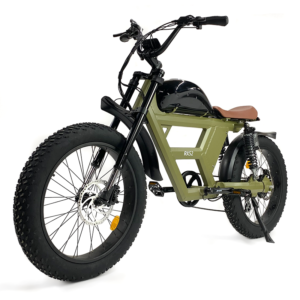In the modern manufacturing landscape, efficiency and precision are paramount. This is especially true in industries such as pharmaceuticals, cosmetics, and food and beverage, where filling, capping, and labeling are critical stages of the production process. The integration of advanced automation equipment for these tasks can significantly enhance productivity, consistency, and quality. This article explores the components and benefits of the filling capping labeling series, and how automation equipment is revolutionizing these essential operations.
What is the Filling, Capping, and Labeling Series?
The filling, capping, and labeling series refers to a suite of automation equipment designed to streamline the packaging process in manufacturing. This series typically includes:
- Filling Machines: Devices that accurately dispense liquids, pastes, powders, or granules into containers.
- Capping Machines: Equipment that securely places and fastens caps or lids onto containers.
- Labeling Machines: Systems that apply labels to containers, ensuring correct placement and adherence.
These machines can operate independently or as part of an integrated line, providing seamless transitions between each stage of the packaging process.
Key Components of the Filling, Capping, and Labeling Series
- Filling Machines:
- Volumetric Fillers: Dispense a precise volume of product into each container. Ideal for liquids and semi-liquids, they ensure consistent fill levels, which is crucial for products sold by volume.
- Gravity Fillers: Rely on gravity to fill containers and are best suited for thin liquids without particulates. They are simple and cost-effective.
- Piston Fillers: Use a piston to draw and dispense the product, suitable for thick or viscous substances.
- Net Weight Fillers: Measure the product by weight, ensuring accuracy for products where weight consistency is critical.
- Peristaltic Fillers: Use a flexible tube and rotor to pump the product, ideal for sterile or sensitive liquids.
- Capping Machines:
- Screw Cappers: Apply screw-on caps to containers. They can handle a variety of cap types and sizes and are known for their versatility.
- Snap Cappers: Press fit caps onto containers, commonly used for snap-on lids.
- Crimp Cappers: Used for sealing containers with crimped or crimp-on caps, often in pharmaceutical applications.
- Chuck Cappers: Use a chuck or collet to grip and twist the cap onto the container, providing precise torque control.
- Labeling Machines:
- Pressure-Sensitive Labelers: Apply adhesive labels to containers. They can handle various label shapes and sizes, offering flexibility for different products.
- Sleeve Labelers: Apply shrink sleeves that conform to the container’s shape when heat is applied. They provide full-body labeling, ideal for branding and tamper-evidence.
- Glue-Based Labelers: Use glue to apply labels, suitable for applications where adhesive labels are not preferred.
- Wrap-Around Labelers: Designed for cylindrical containers, wrapping labels around the container for full or partial coverage.
Benefits of Automation Equipment in Filling, Capping, and Labeling
- Increased Efficiency:
- High Throughput: Automation equipment can handle large volumes of products at high speeds, significantly increasing production rates compared to manual processes.
- Continuous Operation: These machines can operate continuously with minimal downtime, ensuring a steady flow of products through the production line.
- Consistency and Precision:
- Accurate Filling: Filling machines provide precise control over the amount of product dispensed, reducing waste and ensuring uniformity across all containers.
- Secure Capping: Automated capping ensures that caps are applied with consistent torque and placement, reducing the risk of leaks or contamination.
- Correct Labeling: Labeling machines apply labels accurately and consistently, enhancing product presentation and compliance with labeling regulations.
- Cost Savings:
- Reduced Labor Costs: Automation reduces the need for manual labor, leading to lower operational costs and freeing up human resources for more skilled tasks.
- Minimized Waste: Precision filling and capping minimize product waste, and accurate labeling reduces the likelihood of rework due to mislabeling.
- Improved Quality Control:
- Consistent Product Quality: Automation ensures that each container is filled, capped, and labeled to the same high standard, improving overall product quality.
- Traceability: Automated systems can integrate with tracking and quality control systems, providing valuable data for traceability and regulatory compliance.
- Flexibility and Scalability:
- Adaptable to Different Products: Modern filling, capping, and labeling machines are designed to handle a wide range of product types, container sizes, and label formats, offering flexibility for diverse production needs.
- Scalable Solutions: Automation equipment can be scaled up or down to meet changing production demands, making it suitable for both small and large operations.
Applications Across Industries
Automation equipment for filling, capping, and labeling is used across various industries to enhance production efficiency and product quality:
- Pharmaceuticals:
- Precision and Sterility: Automation ensures precise dosing and secure capping, critical for maintaining sterility and dosage accuracy in pharmaceuticals.
- Compliance: Automated labeling systems help meet stringent regulatory requirements for drug labeling and packaging.
- Food and Beverage:
- High-Speed Production: Automated systems can handle the high-speed filling, capping, and labeling required for food and beverage products, ensuring freshness and shelf life.
- Versatility: Equipment can be adapted for different container types and sizes, from bottles and jars to pouches and cans.
- Cosmetics:
- Consistency: Automation ensures consistent product presentation, critical for maintaining brand image in the competitive cosmetics market.
- Efficiency: Automated filling and capping reduce the risk of contamination and extend product shelf life.
- Chemicals and Household Products:
- Safety: Automation enhances safety by reducing manual handling of hazardous or caustic substances.
- Accurate Labeling: Ensures that safety information and usage instructions are applied correctly and consistently.
Choosing the Right Automation Equipment
When selecting automation equipment for filling, capping, and labeling, consider the following factors:
- Product Characteristics:
- Viscosity: Choose filling machines suited to the viscosity of your product, whether it’s a thin liquid or a thick paste.
- Container Type: Ensure that the equipment can handle the specific types of containers you use, from glass bottles to plastic jars or flexible pouches.
- Production Volume:
- Scale: Select equipment that matches your production volume, whether you need a small-scale solution for a boutique operation or high-speed machines for mass production.
- Integration and Compatibility:
- Modular Systems: Look for modular systems that can be integrated with existing equipment or expanded as your production needs grow.
- Automation Compatibility: Ensure compatibility with other automation systems, such as conveyors or quality control sensors, for a seamless production line.
- Regulatory Requirements:
- Compliance: Ensure that the equipment meets industry-specific regulatory requirements, such as FDA regulations for pharmaceuticals or food safety standards for consumables.
- Support and Maintenance:
- Supplier Support: Choose a reputable supplier that offers reliable support and maintenance services, including training for your staff and access to spare parts.
Conclusion
The integration of filling, capping, and labeling series with advanced automation equipment is transforming manufacturing by enhancing efficiency, precision, and quality. These systems offer significant benefits across various industries, from pharmaceuticals and cosmetics to food and beverage. By investing in automation equipment, businesses can streamline their production processes, reduce operational costs, and deliver consistent, high-quality products to the market. As technology continues to advance, the role of automation in filling, capping, and labeling will only grow, making it an essential component of modern manufacturing.













+ There are no comments
Add yours